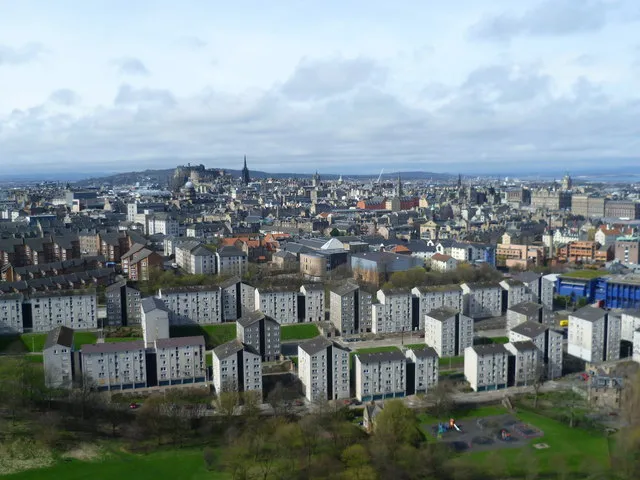April 2023 Addenda: Updates to v4.1 Innovation and LEED Homes

Homes, homes, and more homes are the focus of the April 2023 addenda.
This quarter’s LEED Addenda were released by the U.S. Green Building Council (USGBC) on April 21, 2023.
The one-liner: no major changes, but LEED for Homes projects should review the new interpretations and international tips.
The addenda delivered new LEED Interpretations, updates to former rulings, and several Reference Guide corrections focused on LEED for Homes. Several updates to pilot credits are also included.
The biggest single update: maximizing innovation under v4.1
As was already available for v4 projects, if your v4.1 project is pursuing a pilot alternative compliance path (ACP), then you can earn all five innovation credit points using only innovation and exemplary performance credits (updated ID# 10483).
Home sweet Homes: lots of new guidance
USGBC issued four new rulings for v4 and v4.1 residential building design and construction (BD+C) projects.
ID# 10504—Dormitories and assisted-living facilities can certify under LEED for Homes.
- Confused about which rating system to choose for your building layout? Here’s a rule of thumb. If amenities directly adjoin one or more bedrooms and are only accessible by people living in those bedrooms, the full suite should be treated as a multifamily unit in a multifamily building.
- For notes on ventilation requirements and how to apply the Home Size Adjuster, see the detailed language here.
ID# 10505—Here’s what to do if your project has unfinished landscaping at final verification.
- Option 1: Don’t pursue WEc Outdoor Water Use or WEc Total Water Use.
- Option 2: Be conservative with your outdoor water-use calculations. Assume unfinished landscaping is turf grass in your outdoor water budget, and install erosion controls at unfinished areas.
ID# 10506—All-electric projects must still install CO monitors.
- Even if the project isn’t installing any combustion appliances, it’s possible that tenants will install their own. All LEED for Homes projects must install CO detectors, following prerequisite requirements.
ID# 10507—Folks, we have a definition of “major energy user” on residential projects!
- Examples include pools, spas, heated driveways, heated garages, and other uses installed at project completion that are not included in the HERS Index but consume >1% of the project’s energy.
- Have a major energy user? Choose Option 1, LEED Energy Budget, when pursuing EAc Annual Energy Use.
There were two updates to existing rulings for v4 and v4.1 residential BD+C projects.
- Future projects registering under LEEDv4 BD+C: Multifamily Midrise can no longer use a former ruling that permitted visual inspection as verification in lieu of on-site testing under certain circumstances for EAp Minimum Energy Performance (Updated ID# 10490).
- Like their v4 BD+C counterparts, LEED v4.1 projects served by a campus irrigation loop can now use data from the campus meter for WEp Building-Level Water Metering (Updated ID# 10475).
Carbon offsets, and exhausting electric kitchens, under BD+C
ID# 100002578—All-electric residential kitchens still require exhaust.
- Project teams can use either range hoods or ceiling- or wall-mounted exhaust fans to meet requirements in accordance with ASHRAE 62.1-2010. Formerly, hoods providing direct exhaust were specifically required only for gas ranges.
ID# 100002573—In praise of additionality!
- Qualifying renewable energy resources must have come online within 15 years of the attribute contract or purchase date (this was formerly specified as after Jan 1, 2005. That year is now far enough away that financial support is lower impact when compared to investments in newer deployment). This interpretation also applies to operation and maintenance (O+M) and interior design and construction (ID+C) projects.
More residential highlights
ID# 100002577—Calling all energy modelers on international projects: here’s how you pick your climate zone.
USGBC has published new International Tips for selecting an equivalent U.S. climate zone for projects located outside the U.S.
- Projects should identify the climate zone number and letter using ASHRAE Standard 169, Table A-6, or, when not available, Section A3 and Table A-3.
- With the climate zone number and letter in hand, the team should determine the project location’s annual heating degree days (HDD65) and cooling degree days (CDD50) using local data (or the ASHRAE Climatic Condition website) and then, using ASHRAE 90.1-2010, Normative Appendix D, Table D-1, find a U.S. city with similar conditions in a county in that same climate zone (ASHRAE Standard 169, Table B-1).
- Some nuances:
- Projects in the Southern hemisphere: Model the building orientation at 180° rotated from the designed orientation.
- Projects in climate zone 1B: Select a similar U.S. city whose county is in zone 2B.
ID# 100002572—Got your own private wishing well?
- If you build it—a private outdoor water feature (e.g., pool, fountain)—USGBC will come and require that you pursue WEc Total Water Reduction instead of WEc Outdoor Water Use.
Rundown: pilot credit tweaks
Several pilot credits were also updated. Here’s a recap.
- IPpc81 Green Training—Documentation requirements updated
- IPpc89 Social Equity within the Community—Updated requirements for Option 2 (partnering with community-based organizations)
- IPpc90 Social Equity within the Project Team—Updated requirements for Option 1 (workforce pay and benefits)
- IPpc99 Design for Enhanced Resilience—Documentation requirements for flooding-specific design measures updated
- IPpc100 Passive Survivability and Back-up Power During Disruptions—Generators required to be compatible with clean-burning and storable fuels
- WEpc115 Whole-Project Water-Use Reduction—Minor clarifications to text
Calculator updates
A few minor updates were made to two calculators.
- LEED v4.1 Furniture and Medical Furnishings Calculator—Formula errors fixed
- LEED v4.1 Renewable Energy Calculator—Point thresholds fixed for BD+C: Core & Shell and ID+C, and notes updated
The updated notes in the LEEDv4.1 Renewable Energy Calculator are a good reminder to project teams that there are pilot ACP paths enabling use of Tier 2 renewable energy purchasing for the Optimize Energy Performance credit (when using v4.1, v4.1 Pilot ACP EApc161: Energy Simulation Performance Path, or v4 Pilot ACP EAPc111: Alternative Performance Rating Method, Case 2 or 3).
